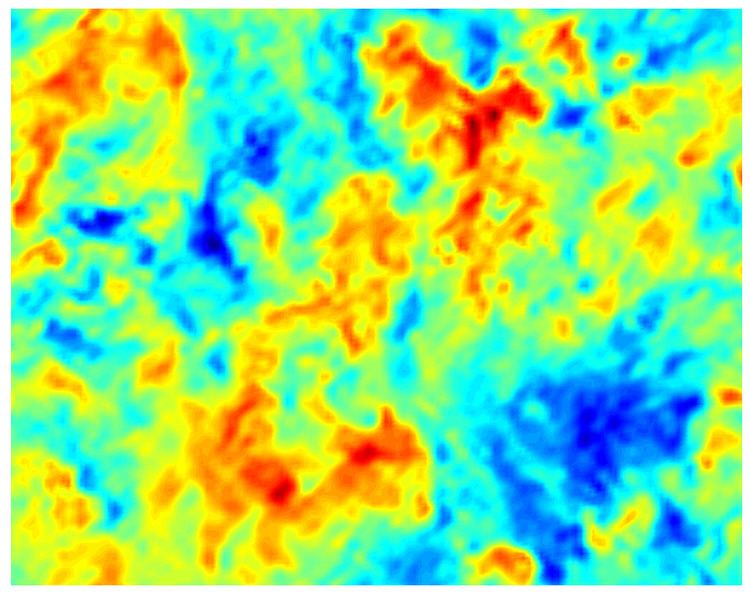 | ||
Filtering in the context of large eddy simulation (LES) is a mathematical operation intended to remove a range of small scales from the solution to the Navier-Stokes equations. Because the principal difficulty in simulating turbulent flows comes from the wide range of length and time scales, this operation makes turbulent flow simulation cheaper by reducing the range of scales that must be resolved. The LES filter operation is low-pass, meaning it filters out the scales associated with high frequencies.
Contents
Definition in physical space
The low-pass filtering operation used in LES can be applied to a spatial and temporal field, for example
where
The filter kernel
This can also be written as a convolution operation,
Definition in spectral space
The filtering operation removes scales associated with high frequencies, and the operation can accordingly be interpreted in Fourier space. For a scalar field
or,
The filter width
The spectral interpretation of the filtering operation is essential to the filtering operation in large eddy simulation, as the spectra of turbulent flows is central to LES subgrid-scale models, which reconstruct the effect of the sub-filter scales (the highest frequencies). One of the challenges in subgrid modeling is to effectively mimic the cascade of kinetic energy from low to high frequencies. This makes the spectral properties of the implemented LES filter very important to subgrid modeling efforts.
Homogeneous filter properties
Homogeneous LES filters must satisfy the following set of properties when applied to the Navier-Stokes equations.
Filters satisfying these properties are generally not Reynolds operators, meaning, first:
and second,
Inhomogeneous filters
Implementations of filtering operations for all but the simplest flows are inhomogeneous filter operations. This means that the flow either has non-periodic boundaries, causing problems with certain types of filters, or has a non-constant filter width
where
The two terms both appear due to inhomogeneities. The first is due to the spatial variation in the filter size
Several filter operations which eliminate or minimize these error terms have been proposed.
Classic large eddy simulation filters
There are three filters ordinarily used for spatial filtering in large eddy simulation. The definition of
Box filter
The filter kernel in physical space is given by:
The filter kernel in spectral space is given by:
Gaussian filter
The filter kernel in physical space is given by:
The filter kernel in spectral space is given by:
Sharp spectral filter
The filter kernel in physical space is given by:
The filter kernel in spectral space is given by:
